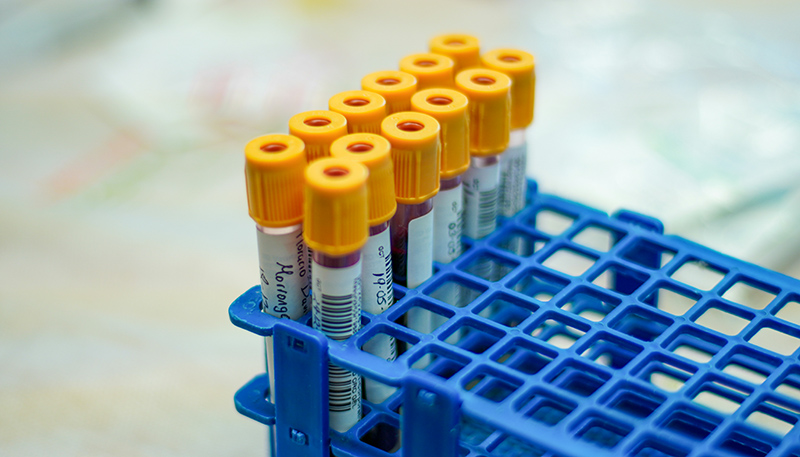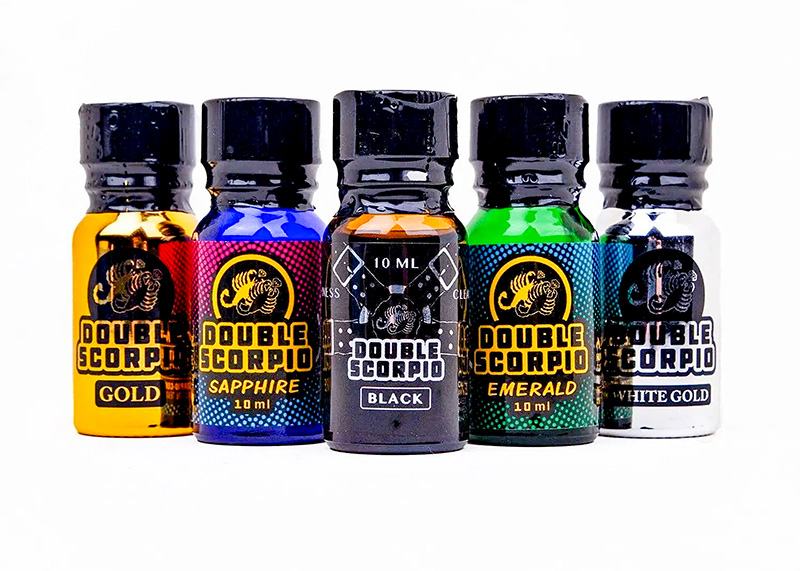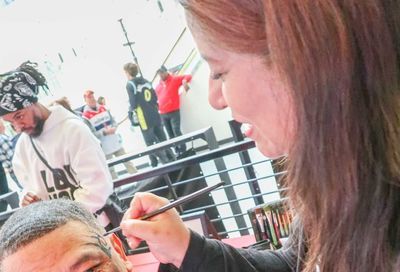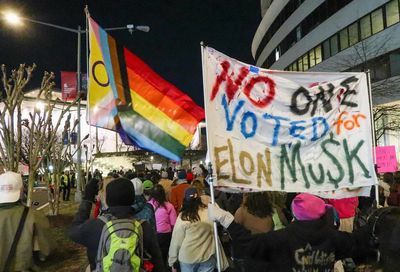The 40-Year-Long Fight: HIV Experts on Four Decades of the Epidemic
Four decades after the first HIV diagnosis, advocates reflect on its impact on medicine, the LGBTQ rights movement, and society as a whole.

It was an article by Larry Kramer, published in the New York Native in 1983, that awoke Paul Kawata to the threat of HIV.
While Kawata was already aware of a mysterious disease that was largely claiming the lives of gay men, Kramer’s opening words resonated with him: “If this article doesn’t scare the shit out of you, we’re in real trouble. If this article doesn’t rouse you to anger, fury, rage, and action, gay men may have no future on this earth.”
“With that opening line, Larry awoke my activism and the need for the community to fight,” says Kawata, now the executive director of NMAC, the organization dedicated to combating HIV among vulnerable communities, particularly communities of color, by fighting for health equity and racial justice in health care.
“In those early days, it was absolutely frightening,” Kawata recalls. “While we thought we knew how HIV was transmitted, there were no definite scientific studies yet. And so there were rumors about poppers and there were rumors about all these different ways that you could or could not catch HIV. And the only thing that we saw back then was the fact that our friends were getting sick and dying, and they were dying so fast.
“It was kind of unbelievable. When I look back and think about how you could see some person one day, and, a month later, they were dead. I was a young gay man then. I knew nothing about death. I knew nothing about sickness. All I knew was that somebody I loved was in trouble,” Kawata adds, referring to his former partner, who died from the disease before modern-day treatments were ready.
For Daniel Bruner, the awakening came much earlier, when he read a story in The New York Times about the emergence of mysterious illnesses affecting gay men in Los Angeles and New York.
“I remember having just moved to the D.C. area with my partner at that time, and reading that story, and looking at each other and saying, ‘Oh my God, we don’t even want to think about what this might be,’” says the senior director of policy at the Whitman-Walker Institute, the federally-qualified health center that specializes in HIV- and LGBTQ-specific care.
“In the very early days, just from the perspective of the general population, as well as gay men in the circles I was win, people were completely terrified. I remember people going through phases where everyone stopped hugging and everyone stopped kissing each other hello, and people were very careful about sharing a water glass or sharing a beer or sharing a glass of wine or anything,” Bruner adds. “There was just a lot of fear and a lot of physical separation…. There was no cure, certainly, and there was no really effective treatment at all. So it was a time of a lot of uncertainty and a lot of fear.”
Joanne Sincero primarily learned about HIV and AIDS through her activism in a group called OUT, which advocated for fast-tracking HIV treatments through the FDA. But even though much of the coverage of the virus focused on gay men in the early days of the epidemic, Sincero knew from her personal interactions with various communities that HIV was spreading beyond the LGBTQ community to other vulnerable groups.
Sincero, now the wellness coordinator at Whitman-Walker Health, recalls how, after joining Whitman-Walker’s team in 1994, she would have to figure out contingencies in case some of the people with HIV in her day treatment program passed away.
“We had the constant challenge of caring for, honoring people’s lives, their stories. Yet while you were losing people right before your eyes — someone died every week — we tried to figure out how we could manage to provide care without making people feel like they were going to be next,” she recalls. “At the time, there were very few treatments, and some of them were really toxic for people. We had a nap room as part of our program because people couldn’t even make it through a day without having to rest and lie down.
“And yet there was also a sense that people wanted to live the last bit of their lives. I remember taking someone to the Air and Space Museum, to the planetarium, where you can lie back and look up at the stars, and this person was so ill that I would listen for every breath as he breathed, like, ‘Oh, my God, this is going to be the last breath?’
“The only way you could bear it was that you knew that the work was still there and you had to keep going because there were people who were depending on us, depending on each other to carry on. So having a supportive community kind of normalized things for people and gave them a sense that they could still go on and do stuff and still get something out of life, even though they didn’t know how much time they had left,” she adds.
For those suffering from the disease, true relief didn’t come until the mid-1990s, after Dr. David Ho released his seminal study of protease inhibitors and health care professionals realized that they had found a treatment that would keep people with HIV alive.
“I look back on those years between 1996 and 2000 and it was a complete shift in everything that we were doing. Up until then, almost all of our work was just about helping people die with dignity. And all of a sudden, around ’96, ’97, in ’98, we got to learn how to have people live with dignity,” says Kawata.
“Around 2008 is when we got the studies that showed that if you had an undetectable viral load, you couldn’t pass the virus to someone,” he adds. “And that became the next revolution, because all of a sudden we realized that not only could we save an individual’s life, but we could also save the community’s life if they could become undetectable. And so we had a clear pathway for how to end the epidemic.”
As a result of those advances in treatment and prevention, HIV has become less of a terminal disease and more of a long-term manageable health condition.
“The changes in particular, around 1995 and 1996, were stunning for those of us who were helping people and living with the disease in the community at the time,” notes Bruner. “I was doing a lot of volunteer legal work for a couple of Whitman-Walker clients with the Legal Services Department. And I had a client whose insurance plan would not cover her medications and we were negotiating with the carrier and the employer and, you know, looking into legal action.
“I talked to my client’s doctor at the time and the doctor told me, ‘If you’re going to do something for this individual, you need to do it quickly, because she is declining and she likely will not be alive a year from now.’ And we got the insurance company to reverse course and cover her meds. So she got on meds right away. And about a year or so after that, I got a notice of her impending marriage. So that’s kind of how transformative it was at that particular time.”
The HIV epidemic took an enormous toll, not only on the LGBTQ community, but on society as a whole and the District of Columbia in particular. It’s something that Kawata particularly thinks of when he reflects on his life, given the designation he bears as the last remaining member, out of 33 original co-founders, of the National Association of People Living with AIDS.
“I will be very honest and say that HIV fucked me up,” Kawata says. “I am a part of a generation of people whose lives were completely turned around and lived through a trauma that is almost unspeakable because there was so much stigma and silence around it. And so, while I am proud of the work that I’ve accomplished, I know that it came at a cost. I’m growing old as a gay man, and all the people that I came up with are dead, and I am alone with my memories of these amazing people. There are moments in my life when I know that those angels are with me every step of the way. And there are moments in my life when I know that it feels too much of a burden to carry on the legacy and their dreams.”
Kawata also thinks of the artists, creative professionals, and changemakers who might have had a positive impact on society had they not passed away too early from AIDS-related causes.
“I look back at some of these extraordinary figures: Rudolph Nureyev, Halston, and I wonder ‘What would have happened to Nureyev’s career and how would he have been in the world if he had survived? How would Halston have changed the world?’” he says.
“There are so many voices that are gone too soon and had so much more to give to this world,” says Kawata. “And so beyond the personal loss, the epidemic marks a huge loss to society of talent and the vision and ability that I don’t think we fully understand yet, because there is this generation that could have, should have, would have changed the world. I just look at the loss of creativity and love and political power, and it makes me profoundly sad.”
Sincero and Bruner note one of the effects of the HIV epidemic has been that it’s made many more people more aware of the social determinants of health and of the importance of racial equity in fighting the epidemic, which disproportionately impacts some communities over others.
Looking toward the future, advocates hope that the rapid manner in which researchers were able to develop a vaccine for COVID-19 will inform efforts to develop an HIV vaccine.
“I’d never heard of an RNA vaccine until this last year. And I will be honest, I had the same kind of cynical sense of what was possible. It seemed like we had been fighting for an HIV vaccine forever and not making much progress. And yet I would be foolish to not acknowledge what has been extraordinary around the COVID vaccine,” notes Kawata.
“I had an opportunity to talk to some of the scientists who work on the COVID vaccine. And they’ve all said to me, ‘You’re next.’ And so I don’t know if it’s pollyannaish or not. What I know is that people who are doing work on this RNA vaccine have said that there is a great possibility that this mechanism can be used for many other diseases that we are facing. And so my hope is that we will [eventually] have an HIV vaccine.”
Sincero, too, marvels at how quickly a vaccine for COVID was developed and the implications that might hold for HIV.
“Obviously, it’s a different virus, but considering the long hunt for an HIV vaccine, in one sense, it made me feel hopeful, where maybe they’ve learned some other things that could be applicable to HIV,” she says. “And in another sense, I thought, ‘Wow, it just shows how entrenched and how wily this virus is.’”
On the other hand, Sincero says what is currently known about HIV, including the use of treatment as prevention (TasP), offers its own hope for the future.
“A vaccine would obviously be a great prevention tool. But we already have some fantastic ones like PrEP, which is 99% effective,” she notes.
She also has concerns about the need for support services for people who are already infected if a vaccine is developed.
“I’ve worked with a lot of people who I’ve known for 20 years who are living with this virus. And in some sense, it’s been a struggle for them because they feel like it’s gotten lost a bit, that they’ve kind of taken a back seat — necessarily so — as AIDS service organizations evolved into community health centers,” Sincero says. “And so I think we have to remember that social connection is one of the most important parts of health care. It’s obviously not just maintaining your medical regimen and taking your pills. So in that sense, I hope there continue to be places for people to connect, to keep those social ties.”
Kawata says that, despite the HIV epidemic’s tremendous toll in terms of lives lost, it also had some effects that were ultimately positive and beneficial to the larger LGBTQ community.
“So I’m about to say something that some people may consider heresy: I think the HIV movement woke up the LGBTQ movement in a way that we will never fully understand,” he says. “All of a sudden, all of these folks who were living in their closets, in a world that hated them, had to stand up and say, ‘I need your help.’ And I think what it did is it humanized gay men to a larger world in a way that we hadn’t been humanized. It woke up a community to say ‘We deserve the same rights as anybody else.’
“And so in the larger context, I think what the epidemic did was it became the political touchstone for the LGBTQ movement to then go on to look at marriage, to look at lived equality, to look at all these other fights,” Kawata adds.
“I think the second thing that the epidemic did was it helped us to understand that we were everywhere, because HIV was everywhere. It wasn’t just in New York and San Francisco or L.A., it was Omaha. I did a meeting with the ‘Ladies who Lunch’ in Omaha. And it was extraordinary to me to watch them try to grapple with the fact that all of a sudden the people that they loved, with whom they really never talked about their sexuality, were getting sick and they wanted to do something. And so I think that it created a sense of: who are your friends? And the people who stood with us are the people that we owe the world to.”
Kawata notes that the parameters of the fight against HIV have shifted to a question of health care access.
“HIV now is looking for racial equity in health, it is asking the question of ‘Can we as a society address the racism that is perpetuating an epidemic?’ When you look at Black Lives Matter and look at the injustices that are happening, we are recognizing that HIV/AIDS is part of that struggle, that the epidemic continues to disproportionately impact black and brown communities. And we have to look at what racial justice means if we’re ever going to end HIV.”
Read More:
Billy Porter reveals he’s been living with HIV for 14 years
UNAIDS Ambassador: Eliminating bans on gay sex are crucial to fighting spread of HIV
Injectable HIV treatment only requires six doses per year, study finds
Support Metro Weekly’s Journalism
These are challenging times for news organizations. And yet it’s crucial we stay active and provide vital resources and information to both our local readers and the world. So won’t you please take a moment and consider supporting Metro Weekly with a membership? For as little as $5 a month, you can help ensure Metro Weekly magazine and MetroWeekly.com remain free, viable resources as we provide the best, most diverse, culturally-resonant LGBTQ coverage in both the D.C. region and around the world. Memberships come with exclusive perks and discounts, your own personal digital delivery of each week’s magazine (and an archive), access to our Member's Lounge when it launches this fall, and exclusive members-only items like Metro Weekly Membership Mugs and Tote Bags! Check out all our membership levels here and please join us today!






















You must be logged in to post a comment.